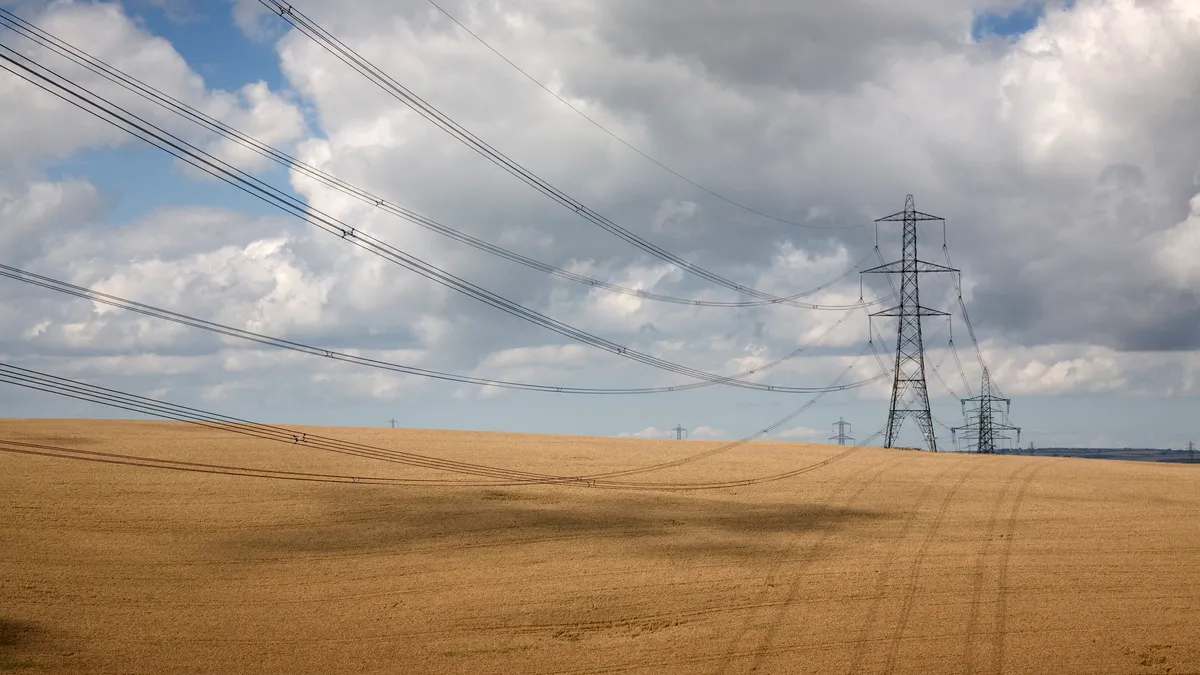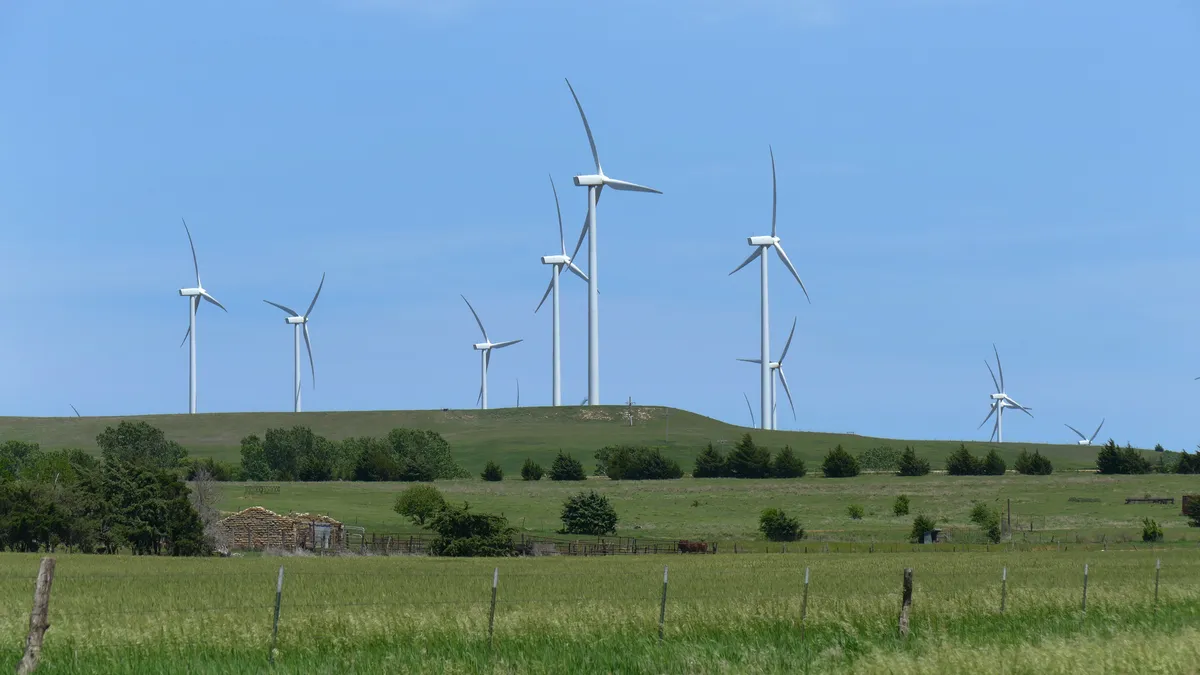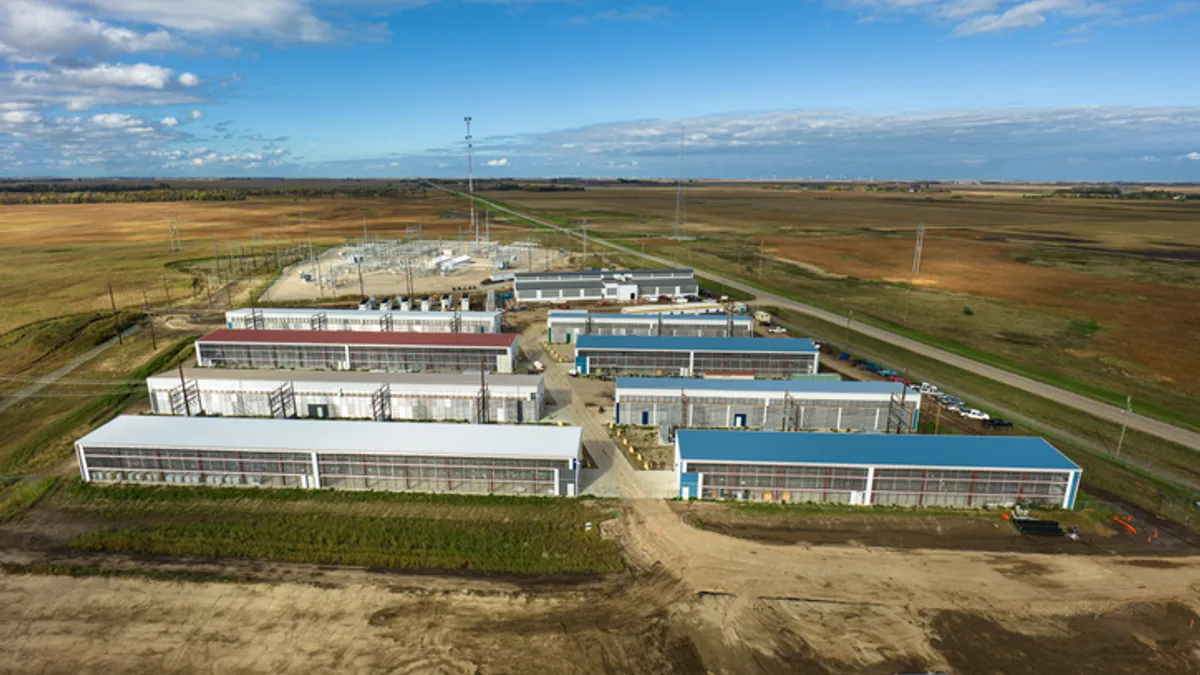Enhanced cooperation between electric utilities and the federal Department of Energy is essential to realizing the renewable energy and climate change goals set by the Obama administration, and the DOE is remaking itself to meet those aims.
The United States can only meet its commitments to a 26% to 28% cut in greenhouse gas emissions from 2005 levels by 2025 if solutions are in place by 2020 to make the U.S. grid clean, affordable, and reliable, a DOE leader told the audience at the Grid Edge 2015 late last month.
“We have a pretty affordable, pretty reliable grid, but not a clean grid,” said Asst. Secretary for Energy Efficiency and Renewable Energy (EERE) David Danielson. “We want to know how to make it clean in a way that enhances reliability and affordability.”
Coming from the private sector, he understands two seemingly contradictory things, he said. One is that it is alienating to have the federal government announce it can help, because the private sector and state regulators are going to do much of what has to happen.
The other is that the DOE can help, and that its assistance will be essential if the energy system is to make the necessary advancements leading up to the Obama administration's climate goals.
“We are humble about the role we have to play but we think we can be an important partner,” he said.
He listed four ways DOE can have an impact on advances in transmission-distribution system interoperability and in bringing distributed energy resources (DERs) into the system.
- Research, development, small scale demonstration of advanced technologies that drive grid innovation
- Partnerships with stakeholders, including utilities, regulators, and technology providers, to help coordinate the use of their resources to meet challenges
- Investment of federal funding in innovative demonstrations at scale to show what is possible
- Confidential coordination behind the scenes with stakeholders to help convene and analyze and to be an “honest broker” in finding ways forward
There is a huge opportunity on the grid, Danielson said. The cost of renewables and storage continues to drop just as new tools are emerging to make the system more intelligent, efficient, and capable.
DOE reorganization
A DOE re-organization is underway to eliminate the silos of bureaucratic concern that have been keeping it from a bigger role in seizing that opportunity, Danielson said.
“We were punching way below our weight because we were operating in those silos, but we are breaking all of them down,” he said.
The reorganization came out of a major shift at the agency after about 2012. Before that, the focus was on technology “widgets” like solar modules and wind turbine hardware.
There was little attention given to “investment in the system or grid integration” until “it became clear the technologies were going to be cost competitive in the near future and become big,” he recalled. “Then we started over from the bottom up.”
In the last three years, investment in studying and understanding the system has tripled. The department produced the Eastern Renewable Generation Integration Study and Western Wind and Solar Integration Study.
“They showed we can get 30%-plus wind and solar penetrations on the grid and it will work. They are being used to show grid operators and utilities and regulators we can do that,” Danielson said.
Investments in advanced power electronics have led to breakthroughs in the use of renewables to provide grid services. Investments in solar and wind forecasting have led to breakthroughs in understanding how grid operators can use variable renewables as grid assets.
“A $25 million, 5-year investment in four major partnerships around the country is focused on educating the next generation of engineers in how to build the power systems of the future, which will be distributed power systems,” Danielson said. “A $15 million competition between private sector companies is pushing the envelope on solar plus storage technology.”
The $140 million, 5-year Power America program, in conjunction with North Carolina State University, is aimed at driving digital technology innovation to make interactions between DERs and the transmission-distribution system easier.
That program's goal is “to enable cost-competitive, large-scale production of wide bandgap (WBG) semiconductor-based power electronics, which allow electronic systems to be smaller, faster and more efficient than power electronics made from silicon.”
EERE’s Buildings Technologies Office is working on VOLTTRON, a set of sensors and controls for a transactional network. The “open source control and coordination platform,” Danielson said, “will enable developers to quickly build secure apps and agents to unlock their services in the transactive energy space.”
New DOE initiatives
The big ongoing shift away from silos, Danielson said, is intended to increase coordination between his EERE and the Office of Electricity Delivery and Energy Reliability (OE) and “blur the lines” between OE's focus on transmission and distribution and EERE’s focus on behind-the-meter technologies.
One home for the new coordination between the two offices is the just-completed $135 million National Renewable Energy Laboratory (NREL) Energy Systems Integration Facility (ESIF). Begun in 2007, it is “a world class facility” that allows testing of “megawatt-scale hardware” and analysis of the testing by “the biggest and highest performance computer on earth dedicated specifically to clean energy and advanced grid issues,” Danielson said.
Recently, work at the ESIF by the Hawaiian Electric Company and SolarCity led to a breakthrough in advanced inverter technology, Danielson said. It will allow the utility to “double the penetration of rooftop solar than it will allow on its system and get thousands more residential systems interconnected.”
In 2014, DOE spent $7 million to reorganize its 17 national labs into six major working groups with a single set of leaders. With the intent of breaking down separations between technologies, the spending went to fund projects across all the applications.
“We are starting to look at things like end-to-end interoperability, transactive energy across multiple devices, and we are beginning to scratch the surface of documenting the services that new devices can provide,” Danielson said. New initiatives involving EPRI, utilities like NRG Energy, manufacturers like Siemens, and others are “pioneering the way.”
The two major undertakings that Danielson expects to drive change in the interaction of DERs and the distribution system are Secretary Moniz’s Quadrennial Energy Review (QER) and a $3.5 billion, ten-year Grid Modernization Initiative being launched jointly by EERE, OE, and the Office of Energy Policy And Strategic Analysis (EPSA).
The Quadrennial Energy Review
The QER is essentially a “bill of health for America's energy infrastructure,” Utility Dive reported when it was released in April. Based on the Defense Department's reviews of the American military, the first QER called for up to $5 billion to be spent over the next decade to modernize the country's grid infrastructure.
Covering ten sectors over the next four years, DOE and the rest of the government will act on the recommendations the QER produces. “The first sector covered was transmission, storage, and distribution,” Danielson said. Its five major recommendations are:
- Perform a national transmission review, assess the barriers to new transmission, and finds ways to overcome them
- Convene stakeholders to develop a framework and strategy for energy storage and other emerging forms of grid flexibility to enable more renewables integration
- Characterize and value the new services coming into the system, such as DERs, and be an honest broker among stakeholders who disagree on their value
- Improve grid communications, with a major focus on interoperability
- Lead a comprehensive grid modernization effort
Accomplishing these five recommendations is what is driving the reorganization of the department and its national labs, Danielson said. The Grid Modernization Initiative will be a demonstration of the new capability to work across the traditional concerns of EERE, OE, and EPSA. It will also be the means to develop a national lab consortium with core scientific abilities and regional outreach.
Designing a 21st century grid
“The ten year game plan, through 2025, is to demonstrate at scale the technologies we need to enable grid edge deployment and high penetration of low carbon power by 2020,” Danielson said. “That means funding at-scale demos by 2017 which are to be complete by the early 2020s.”
“The future grid provides a critical platform for U.S. prosperity, competitiveness, and innovation in a global clean energy economy,” a DOE presentation on the initiative explains. “It must deliver reliable, affordable, and clean electricity to consumers where they want it, when they want it, how they want it.”
“This year, for the first time, the three DOE offices will put out a single $75 million to $100 million call for proposals for the Grid Modernization Initiative,” Danielson said. “Half will be core technologies, the other half will be either solar specific or grid specific.”
The first five of the Initiative’s six major thrusts are sensing and measurements, design and planning tools, system operation and power flow, and security and resiliance.
Institutional Support, the sixth thrust, should be of unique interest to utilities and state utility regulators because it is aimed at engagement with stakeholders in the nuts and bolts of building a 21st century transmission and distribution system.
“It will take industry partners and stakeholder engagement for this to be successful,” Danielson said.
How to be a part of the solution
“This summer is the time for utilities and any other key stakeholders to engage with the DOE,” Danielson told Utility Dive in an exclusive interview after his conference appearance.
The department will be convening stakeholders over the summer in a follow-up set of workshops to address the Quadrennial Energy Review recommendations.
“We want to have a good honest-broker dialogue and be part of a conversation that helps the future grid evolve in a way that is strategic and good for the country,” Danielson said.
The two objectives are “to figure out where we need to go and what the proper role is for the federal government,” he added. “The state regulators are in the pole position here and we are asking for participation from utilities, equipment suppliers, service providers, and any other interested stakeholders.”
Because the Grid Modernization Initiative “is putting all of DOE’s grid investment under one strategic umbrella,” he explained, “We want feedback on whether the technical thrusts and stakeholder engagement thrusts are the right ones or how we need to think differently.”
The department sees this as an opportunity for utilities to be fully involved and express themselves. “Go and talk to our national labs about the kind of work you want to do with us,” he said.
Partnerships with key regional stakeholders will help the department understand what the regional and state level problems are, where to direct funding, and “how we can put forward good analysis with the capabilities we have at the national labs to help solve those problems,” Danielson said.
“That relationship building will allow us to understand at a deeper level what we can do to help, and then we can build those capabilities at our national labs in a kind of a virtuous cycle.”






















